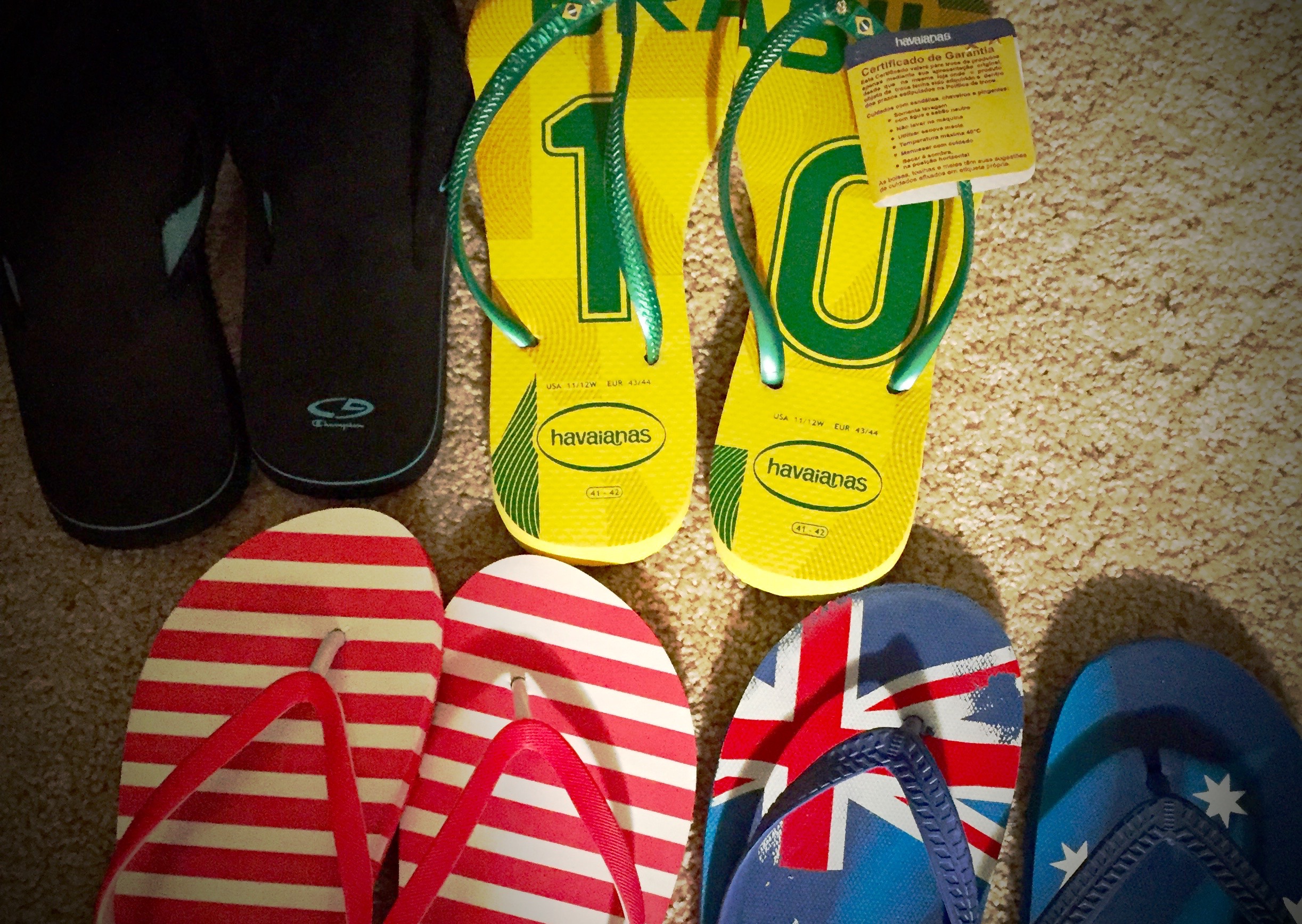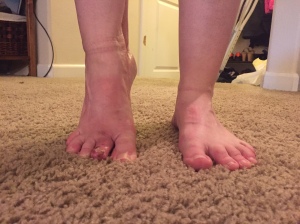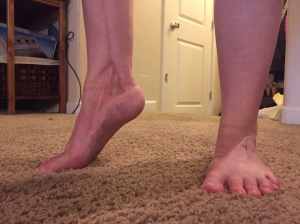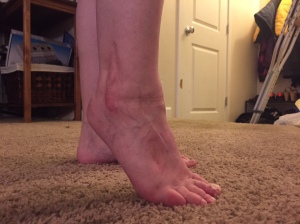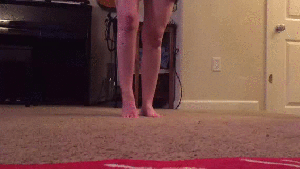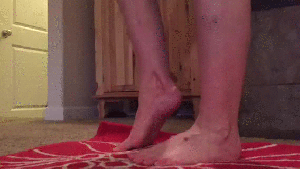The sale went like this:
We’re going to put a huge frame around your foot, run wires all the way through your bones attached to the frame on either side, drill a few metal stakes into your shin bone, and leave you like that for about…oh…say half a year. We’ll put these crazy engineered struts all around it and every day you will turn each strut to a specific number and over time this will force your foot to lift until it is flat, then you just walk around like that for a while until we yank the frame off. You won’t be able to put weight on it or work or drive and it’s going to hurt- I mean HURT- the whole time. Sound good? Here is a snapshot of the device if you’re still considering it…
Obviously, I said no. What a terrible idea! Who in their right minds would do such a thing to themselves on purpose? I thanked the doctor for her time, promised to think it over, which of course I had no intention of doing, and went home feeling defeated.
When I retold the story to Patrick, his response was very different. He couldn’t wait and told me to schedule the surgery as soon as possible. He began listing off all the things I would be able to do once my foot was flat on the ground- hiking, jogging, bowling, skiing, kite-boarding (I was told after mentioning this aspiration to a coworker that this is quite dangerous)… okay, wind-surfing then, wearing flip-flops, walking in real tennis shoes, standing barefoot, taking a step without agonizing pain… He promised to take care fo me the whole time and do every little thing for me if that’s what it took if only he could see me out of pain at last.
Patrick is very persuasive. To understand how I got to this place, I think it is important to understand my starting point. The following images show my right foot in its current disabled position.
If you are thinking this looks painful, you are correct.
I wish I’d vacuumed before these were taken, but I digress.
I’ve been like this for over fourteen years. I do everything on this foot in three inch heels, including hike (although I limit myself to a mile or so as I can’t really stand much longer) and it’s getting really old and making me old. Every joint hurts now, not just the ankle, and I know I’m limping around on borrowed time.
It’s called the Taylor Spatial Frame. It’s an external fixator which functions very much like braces to slowly adjust bones over time. It is often used for leg lengthening or fixation of complex fractures and relies on the medical fun fact that bone can grow at a rate of up to 1mm per day and is the only tissue in the human body which does so without scar tissue. At the end of a correction with external fixator, the new bone or repaired fracture is as strong and healthy as if it had been there all along. For my procedure, the ankle joint is chiseled apart where the bones have grown together to recreate the old joint space at the point of articulation and over a period of a month the struts on the frame will stretch the joint apart and rotate my foot until it is positioned at 90 degrees and sits flat with my heel on the ground. After that, I wait for four months or so while the bone grows back together and condenses.
Of course there are risks. Six months of pain aside, pins which run straight through my bones are at constant risk of infection which can quickly lead to osteomyelitis- a serious bone infection which caused all of my disfiguring disabilities in the first place. There is risk that the joint will not grow back together- this is called a non-union. There is risk the pins through my leg and foot will create fractures in the bone, causing delayed healing. And there is the ever-present risk that inevitably this will fail and I will face my greatest looming fear: amputation.
The prep work leading up to the surgery put me in a manic state similar to a nesting mother. And if you consider it… the scenario is very similar. I will be uncomfortable with limited mobility, unable to wear my current clothing, for over half a year as I wear first the frame, then a cast while the holes from the pins heal. In the end I will give birth to a new and improved foot which, all things working out as planned, will be far superior to my current situation and I will know a pain-free life again. I had to arrange an alternative work schedule with my employer as not working for this length of time as a single mother with no support from another parent was not a viable option. Luckily, I have possibly the best manager on earth. He advised me to focus on my health and work from home as much as possible. Check. I had to modify my vehicle so I would be able to drive since, as aforementioned, I am a mother with children who need to go places and I have a job to get to. We modified my van with a left foot accelerator pedal and after test driving it once already I can tell you it will do quite nicely. Check. I had to prep my bathroom for all the medical supplies I would need, a shower bench, install a shower hose, and find some sot of bench for elevating my foot while peeing. Check, check, check, and check. And the clothes. You can’t fit much over one of these ridiculous looking frames, so I now have an assortment of maxi skirts which serve the dual purpose of both sliding on effortlessly and hiding the lower limb monstrosity. Check.
The only thing left to contend with was my fear, and for that I relied on Patrick. We came up with a mantra that fills me with focus and calm: Flip-flops.
The surgery was scheduled for 7am Monday morning, June 15. On Friday the 12th, I said my farewells to everyone at work, promised to send gnarly photos to those who oddly wanted to see them, promised not to send them to those who begged me not to, and celebrated my last weekend of walking on this foot with a Friday night among friends singing really bad Karaoke. My mother came over to help, bringing my niece, and after I spent Saturday cleaning house waiting for them to arrive, we had a relaxing Sunday showing my niece around Portland, eating too much good food, gorging ourselves on ice cream from Salt & Straw, pedaling a bicycle surrey down the waterfront past the Gay Pride Festival (best way to take an Idaho nine-year-old to that sort of thing, I think- you get a taste of shock without really damaging her irreparably), and then my kids came over in the evening because Georgia was worried I was scared without her. I was scared.
Flip-flops.
